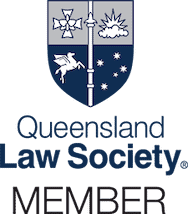Case note: Tinworth v Insurance Australia Limited [2015] HCA Trans 87 (17 April 2015)
Background
Mr Steven Tinworth (Tinworth) was injured at Ipswich, Queensland at the time of the January 2011 floods. He was struck by an aquaplaning vehicle as he stood by the side of the road.
Tinworth lost control of his utility in a patch of water on the highway. Sometime after his accident, a second vehicle aquaplaned off the road in a similar way. Tinworth went to check on the driver of that vehicle, when yet another vehicle, driven by Mr Michael Haydon (Haydon) hit the water and aquaplaned off the road, striking Tinworth.
There was a sign on the highway about 500m before the accident location which said, ‘Road subject to flooding’. The speed limit was a 100 km/hr. Haydon estimated his speed between 80-100 km/hr.
There was about 2cm of water on the road. Haydon saw the water when he was 50m away from it. It was not raining (or it was raining lightly) when the collision occurred.
The trial judge dismissed Tinworth’s claim. Tinworth appealed to the Queensland Court of Appeal (QCA). That appeal was dismissed, with Justice Morrison in dissent. Tinworth made application for special leave to the High Court of Australia (HCA).
HCA Proceedings
The application for special leave was heard on 17 April 2015.
Tinworth made submissions as follows:
- Only in an unusual case could an individual, who is struck by a vehicle leaving the roadway at speed, be unsuccessful.
- Haydon should have travelled at a slower speed, given the signage and conditions.
- The majority of the QCA departed from the trial judge’s view and concluded that there had been, ‘a strong argument that negligence was evident’.
- Adopting a common sense approach, it was open to the Court to find that if Haydon had been travelling at a speed of say 80 km/hr, the collision would have been avoided.
The submissions of Insurance Australia Limited, who defended the case against Haydon, made these points:
- There was no useful evidence at trial about the speed at which the water could be safely traversed.
- Tinworth failed to prove causation. He didn’t establish that if Haydon had been travelling slower, he would have seen the water in time to reduce his speed further. He also failed to prove that if Haydon had reduced his speed, he would not have lost control of the vehicle.
- The conditions had changed between when Tinworth lost control and when Haydon lost control. So it would be unreasonable to use Tinworth’s speed (of 80-85 km/hr) as a guide to determine a safe speed of travel for Haydon.
- Courts can draw conclusions about distance travelled at a particular speed, however, they cannot determine reaction time. Reaction time is a matter of expert evidence.
- In line with the approach in Rickard v Allianz, a case like this requires expert evidence to establish causation.
- Why would it be unreasonable to travel under the speed limit, when there was no rain (or light rain)?
Justice Keane refused the application for special leave with costs, saying the case turned on the application of settled principle to very unusual facts.
To read the High Court of Australia’s transcript, click here.
Need motor vehicle accident advice?
This article is not legal advice. If you require expert advice regarding a motor vehicle accident, call Denning Insurance Law on (07) 3067 3025.





